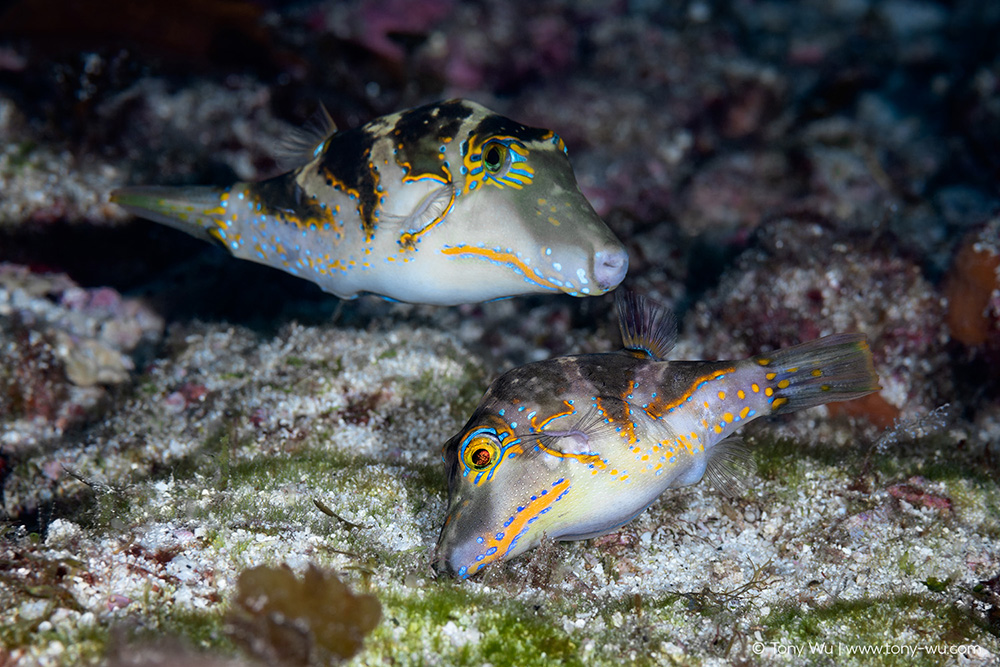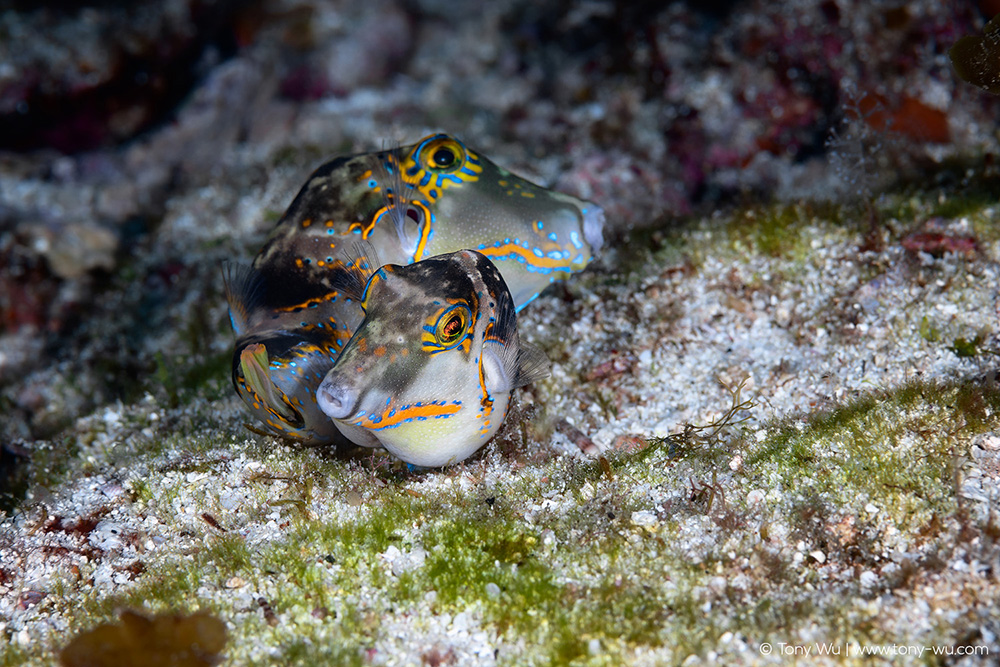It is often said that when making scientificky* observations, one should take care not to anthropomorphise. As defined by the Cambridge Dictionary online, this multisyllabic mouthful means: “to show or treat an animal…as if it is human in appearance, character, or behaviour.”
Please bear this in mind as I share with you a recent field observation of the reproductive ritual of Canthigaster coronata, a smallish pufferfish species, sometimes called a crowned puffer or crowned toby.
The process begins with a female sending out a message saying that she has prepared eggs and seeks a suitable/ reasonably acceptable male for fertilisation. I do not know how this message is communicated, but I can often deduce when it has happened.
The giveaway is the male’s dopey expression:

Having received piscine-Tinder message, said male follows the relevant female all over reef, sticking very close by indeed, often bumping into her by accident, reminiscent at times of a puppy who hasn’t quite yet mastered the concept of motor control.
This could be interpreted as endearing by some.
The female in this situation is busy though. She is 100% focused on the serious mission of selecting the perfect spot on which to deposit her eggs (see photo above). This can, in some instances, literally involve hours of searching and fiddling over hundreds of square metres of territory (“really big area,” for you imperial-units-only people). Females engaged in this important task could be forgiven for being annoyed, but I’ve only ever seen such females being remarkably stoic—completely ignoring the male.
Males have their point of view too of course. They have places to be, things to do. So from their perspective, the sooner it’s done, the better.
Male impatience occasionally manifests in nose bumps and body shoves. Not too aggressive, just enough to say, “Hey look, I’m really into you and all, but can we hurry it up?”
Female remains stoic. Always. Truly impressive.
Perfect spot found and tidied-up to satisfaction, the female signals “OK, it’s time.” You can almost hear the male whoop-whoop as he swoops in, fluttering and quivering to consummate.

Spawning wraps-up quickly, requiring something on the order of five to ten seconds-ish.
The female stays with the eggs for some time, cleaning and aerating, making sure her progeny are safe, giving them the best chance possible for development and survival.
The male—do I need to say it?—departs the nanosecond he’s done.
He has places to be and things to do.

* This word is for you, “Dr” Simon Pierce